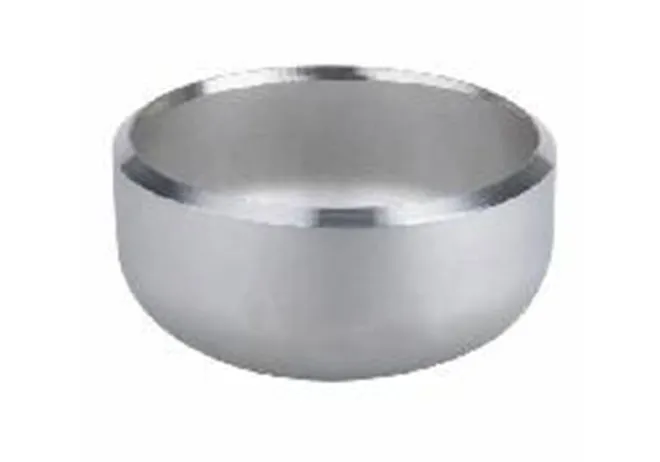-
Cangzhou Yulong Steel Co., Ltd.
-
Phone:
+86 13303177267 -
Email:
admin@ylsteelfittings.com
- English
- Arabic
- Italian
- Spanish
- Portuguese
- German
- kazakh
- Persian
- Greek
- French
- Russian
- Polish
- Thai
- Indonesian
- Vietnamese
- Zulu
- Korean
- Uzbek
- Hindi
- Serbian
- Malay
- Ukrainian
- Gujarati
- Haitian Creole
- hausa
- hawaiian
- Hebrew
- Miao
- Hungarian
- Icelandic
- igbo
- irish
- Japanese
- Javanese
- Kannada
- Khmer
- Rwandese
- Afrikaans
- Albanian
- Amharic
- Armenian
- Azerbaijani
- Basque
- Belarusian
- Bengali
- Bosnian
- Bulgarian
- Catalan
- Cebuano
- China
- China (Taiwan)
- Corsican
- Croatian
- Czech
- Danish
- Esperanto
- Estonian
- Finnish
- Frisian
- Galician
- Georgian
- Kurdish
- Kyrgyz
- Lao
- Latin
- Latvian
- Lithuanian
- Luxembourgish
- Macedonian
- Malgashi
- Malayalam
- Maltese
- Maori
- Marathi
- Mongolian
- Myanmar
- Nepali
- Norwegian
- Norwegian
- Occitan
- Pashto
- Dutch
- Punjabi
- Romanian
- Samoan
- Scottish Gaelic
- Sesotho
- Shona
- Sindhi
- Sinhala
- Slovak
- Slovenian
- Somali
- Sundanese
- Swahili
- Swedish
- Tagalog
- Tajik
- Tamil
- Tatar
- Telugu
- Turkish
- Turkmen
- Urdu
- Uighur
- Welsh
- Bantu
- Yiddish
- Yoruba

Nov . 15, 2024 06:16 Back to list
puddle flange pipe
Understanding Puddle Flange Pipe Applications
Puddle flange pipes are a specialized component frequently utilized in plumbing, drainage, and construction projects, particularly in tight spaces where access is limited. In this article, we will delve into what puddle flanges are, their uses, and the advantages they bring to various applications.
What is a Puddle Flange?
A puddle flange is essentially a plate welded to a pipe, providing a watertight seal to prevent leaks through a concrete structure. It acts as a mechanical seal around the pipe as it passes through walls, floors, or ceilings, ensuring that water or other materials do not seep around the pipe. This design is crucial for maintaining the integrity of buildings and preventing water damage, especially in underground facilities like basements, sewage treatment plants, and various civil engineering applications.
Applications of Puddle Flange Pipes
One of the primary applications of puddle flange pipes is in the construction and maintenance of drainage systems. When draining systems pass through concrete walls or floors, the risk of water ingress is heightened. Puddle flanges provide a robust solution, locking the pipe in place and ensuring a secure seal. This is especially important for systems that must handle significant water flow or those installed in areas where moisture control is critical.
Another significant application is in wastewater management. In settings where sanitary sewer systems and stormwater management systems converge, puddle flanges prevent cross-contamination. With the rise of environmental concerns, ensuring that wastewater remains contained is essential to protect local ecosystems and water quality. Puddle flanges assist in maintaining this integrity and support the overall efficiency of treatment facilities.
puddle flange pipe

Benefits of Puddle Flange Pipes
The advantages of using puddle flange pipes are manifold. First and foremost, they enhance waterproofing. By providing a barrier through which water cannot seep, they mitigate the risk of structural damage caused by moisture infiltration. This is particularly critical in basements and underground facilities where water pressure can be a significant issue.
Additionally, puddle flanges offer robust support for the pipes they surround. This added stability is vital in applications where pipes experience substantial movement due to thermal expansion, vibration, or seismic activity. The design of puddle flanges allows them to absorb some of this stress, thus extending the lifespan of the pipe and reducing the likelihood of failure.
Furthermore, the installation process for puddle flange pipes is generally straightforward. With the right tools and techniques, construction teams can easily incorporate these fittings into their designs. This ease of installation translates to reduced labor costs and shorter project timelines, making them a popular choice among contractors and engineers.
Conclusion
Puddle flange pipes serve as an essential solution for ensuring the integrity of plumbing and drainage systems. Their ability to provide watertight seals, support structural stability, and prevent leaks makes them invaluable in various construction projects. As urban development continues to escalate and the need for effective wastewater management becomes increasingly apparent, the relevance and applications of puddle flange pipes are bound to grow. Understanding their function, applications, and benefits can help contractors and engineers make informed decisions that lead to safer, more efficient buildings and infrastructure.
Latest news
-
ANSI 150P SS304 SO FLANGE
NewsFeb.14,2025
-
ASTM A333GR6 STEEL PIPE
NewsJan.20,2025
-
ANSI B16.5 WELDING NECK FLANGE
NewsJan.15,2026
-
ANSI B16.5 SLIP-ON FLANGE
NewsApr.19,2024
-
SABS 1123 FLANGE
NewsJan.15,2025
-
DIN86044 PLATE FLANGE
NewsApr.19,2024
-
DIN2527 BLIND FLANGE
NewsApr.12,2024
-
JIS B2311 Butt-Welding Fittings LR/SR 45°/90° /180°Seamless/Weld
NewsApr.23,2024











